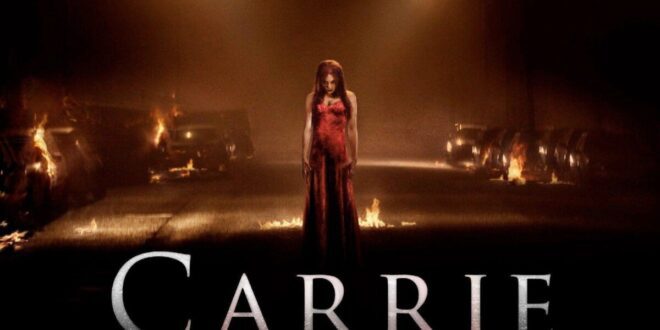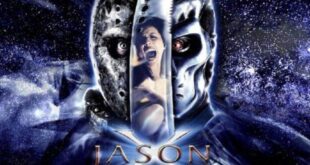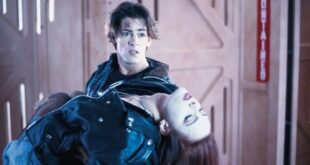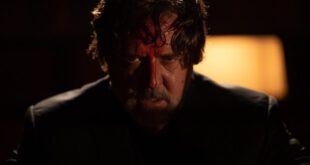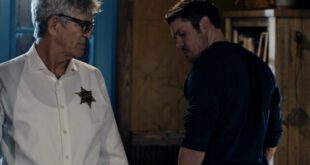“True sorrow is as rare as true love.” That’s the sentiment that sums up this timeless tale of teenage tyranny and supernatural revenge from the mind of horror master, Stephen King. Many horror fans dismissed Carrie (2013) as a slick re-hash of Brian De Palma’s 1976 adaptation, but I’m here to give you a new perspective on this modern re-telling of what is arguably one of King’s most relatable tales.
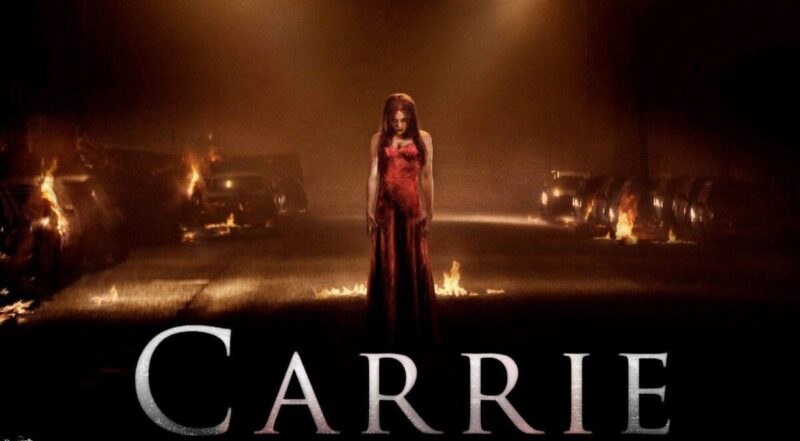
It’s the story of a girl – lonely, sheltered, abused, cast out by her peers – becoming a woman. She is completely unaware that she has the power to become rage incarnate when she comes into her birthright – Telekinesis. The phenomenon of Telekinesis is fascinating and enticing. What would you do if you could move things with your mind? Indulge in these fantasies with me for a moment while we revisit the most recent iteration of Carrie White.

As a Stephen King aficionado, myself, I have to admit my first reaction to the news of a Carrie (1976) remake had me saying choice words and feeling completely exasperated with Hollywood’s incessant need to do what’s already been done (and done well). But upon seeing the initial teaser trailer, they hooked me.
It’s an aerial shot over a quiet suburban town at night, and as we get closer, we see a path of destruction and terror. We hear people’s voice-overs, speculating on what happened and one in particular saying, “She wasn’t a monster, she was just a girl.” And we zoom in on Carrie, played by Chloë Grace Moretz (The Amityville Horror, 2005).
My mind immediately went to the snippets from the White Commission, the official investigation into the events of Prom Night in Stephen King’s original novel, and all of the elaborate and frightening set pieces from the book that honestly couldn’t have been done on the budget of the 1976 film adaptation of Carrie. The rain of stones. The near-total destruction of the town between the high school and Margaret White’s house. The death of Chris Hargenson and her boyfriend Billy Nolan.
And one thing I always felt was missing from every film adaptation of Carrie – the connection between Sue Snell and Carrie White after all is said and done and Carrie meets her end.
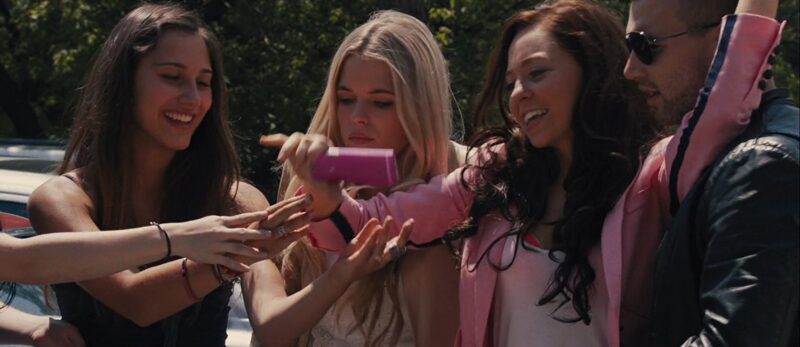
The theatrical release was by no means a new masterpiece. Overshadowed by De Palma’s classic, it passed by with breakneck speed for the Vine/TikTok generation, leaving me feeling a little torn. I do feel that it wasn’t given the attention it deserved like, say… IT (2017). But upon a second viewing, I fell in love with this modern version.
Bullying today is nothing like the bullying of yesteryear. I tend to remind my peers that we had the fortunate luck of not growing up online. The bullying usually stopped at some point. Today, kids can torture each other online, leaving a permanent record of their humiliation to live on long into adulthood. Social Media is basically a yearbook that gets updated daily – and for some of us, the popular kids still don’t want to sign it. Seeing Carrie endure this hazing in a world of smartphones with cinematic-quality cameras ushers in a new level of bullying that even King didn’t see coming.
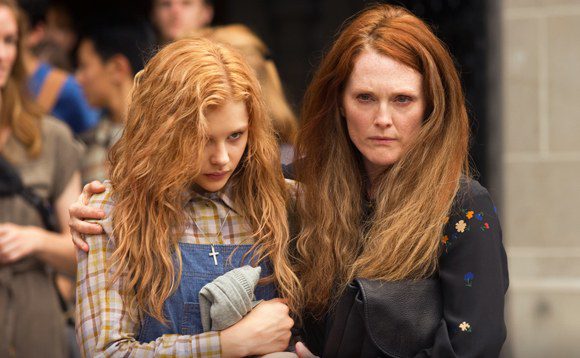
With the recent passing of Oscar-nominated actress Piper Laurie (Carrie, 1976), who gave an unforgettable performance as Margaret White – may she rest in peace – I’ve reflected on the performances of Laurie and Julianne Moore (Carrie, 2013). So different and yet, so chilling in their own respects. Julianne brought a new level of discomfort to the role of Carrie’s religious zealot mother. While Piper Laurie was a uniquely unlikable antagonist to Sissy Spacek’s Carrie, Julianne added a human aspect that points to generational abuse and mental instability. Displaying manipulative behavior such as self-harm to control her sheltered daughter, layered with a maniacal belief in God and The Devil is truly unsettling, elevating Margaret White, even from the pages of the original novel.
She is absolutely the most frightening part of Carrie (2013).
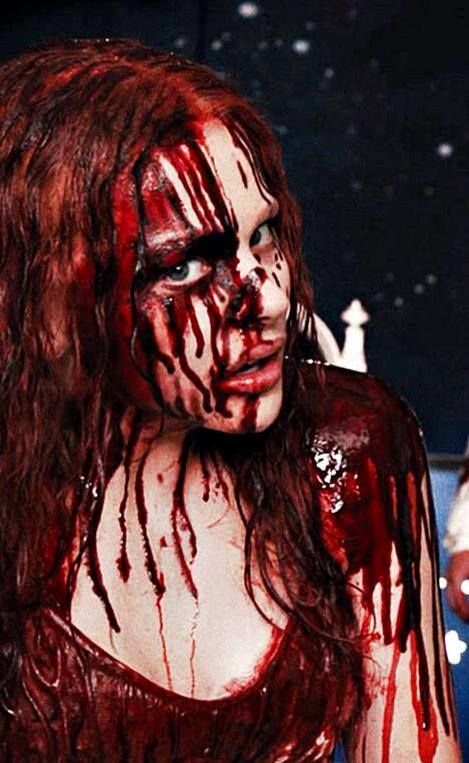
Our new Carrie White for the modern generation actually resembles the Carrie of Stephen King’s original vision more than Sissy Spacek’s 1976 portrayal of a slightly more meek girl. No disrespect to Sissy, she is the centerpiece of one of the most iconic horror films in cinematic history. Chloë Grace Moretz brought a devilish acceptance of the ability to wreak havoc on those who had made her life miserable for so long. As Carrie discovers her ability to affect the environment around her with nothing but a flex of her mind, she begins to revel in this newfound edge over her tormentors. This, coupled with the normal confusion and angst that comes with being a young woman on the cusp of adulthood, is a dangerous combination.
Unlike Spacek’s catatonic trance, Moretz is wholly present and consciously becoming rage personified. Her movements are unnatural and deliberate. Her eyes lock on her prey and watch as they suffer, not once looking away. Completely aware. Completely scorned. Done with everyone’s crap.
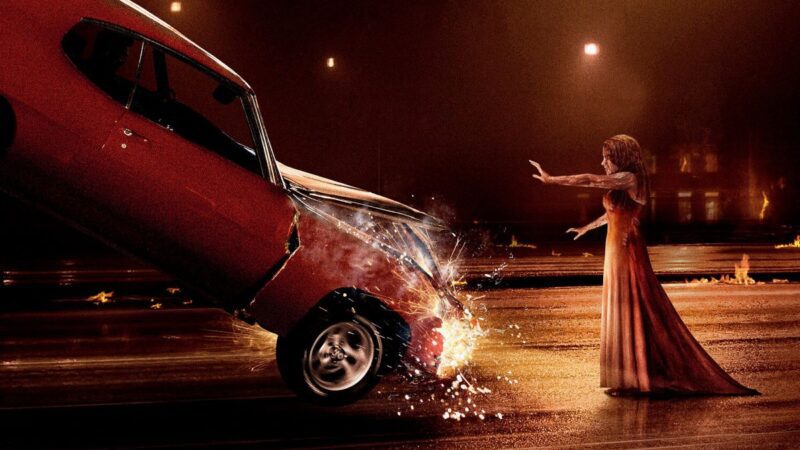
While the theatrical version didn’t quite deliver on all of those huge and frightening set pieces I was hoping for, it did deliver on the deaths – especially Hargenson and Nolan. Oh, they thought they were home-free. They thought they got away with it. And as if that wasn’t bad enough, Chris wants to run Carrie down with Nolan’s car. Even more explosive than Hargenson’s end in the book, there is a sick satisfaction in modern-day effects giving us maximum gore and explosions on this one.
I can forgive the whole town for not being burned to the ground because you’ve given me this.
As for the rain of stones, we do have a larger, more dramatic end to the White women at the end of this version. The tragic, but necessary end to two dangerous women. Also, if you get a chance to pick up the Blu-ray of Carrie (2013), I highly recommend it. The deleted scenes fill in a lot of those blanks that ruined the pacing on this one and added a scene or two from the book that I had hoped to see brought to the big screen, but isn’t that how it always goes with these things?
This month, while you’re bingeing as much horror as you can for spooky season, put Carrie (2013) on the list. It is a worthy entry in the modern horror and Stephen King universes.
 PopHorror Let's Get Scared
PopHorror Let's Get Scared
